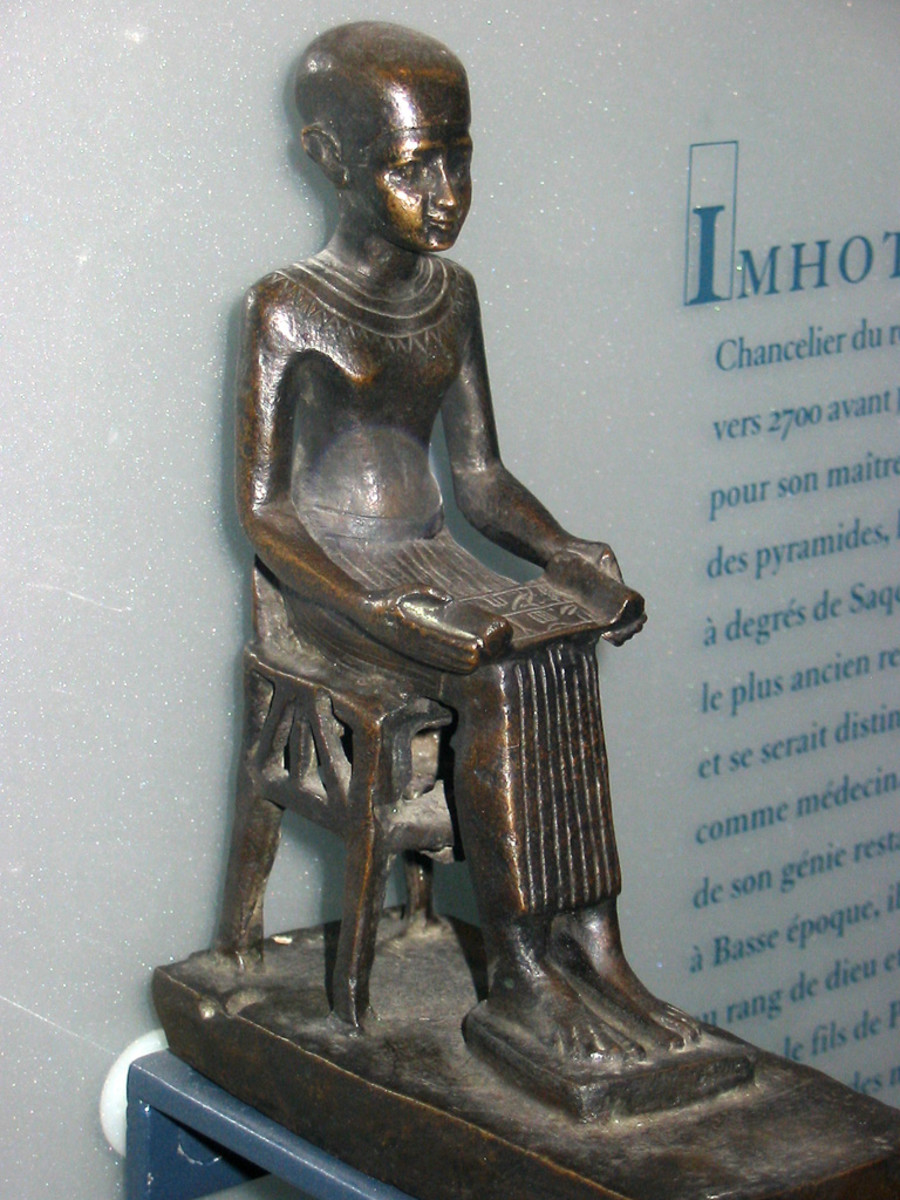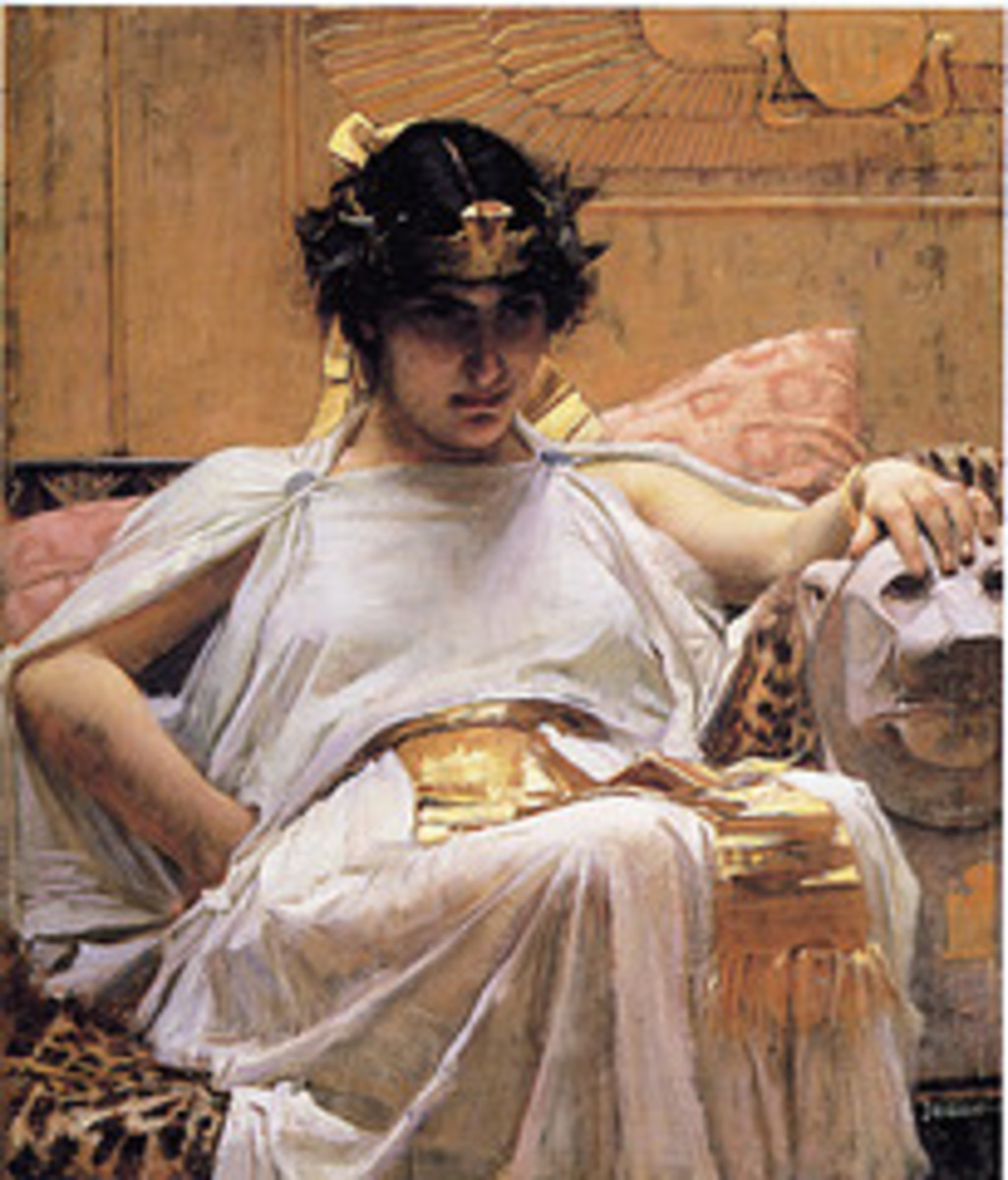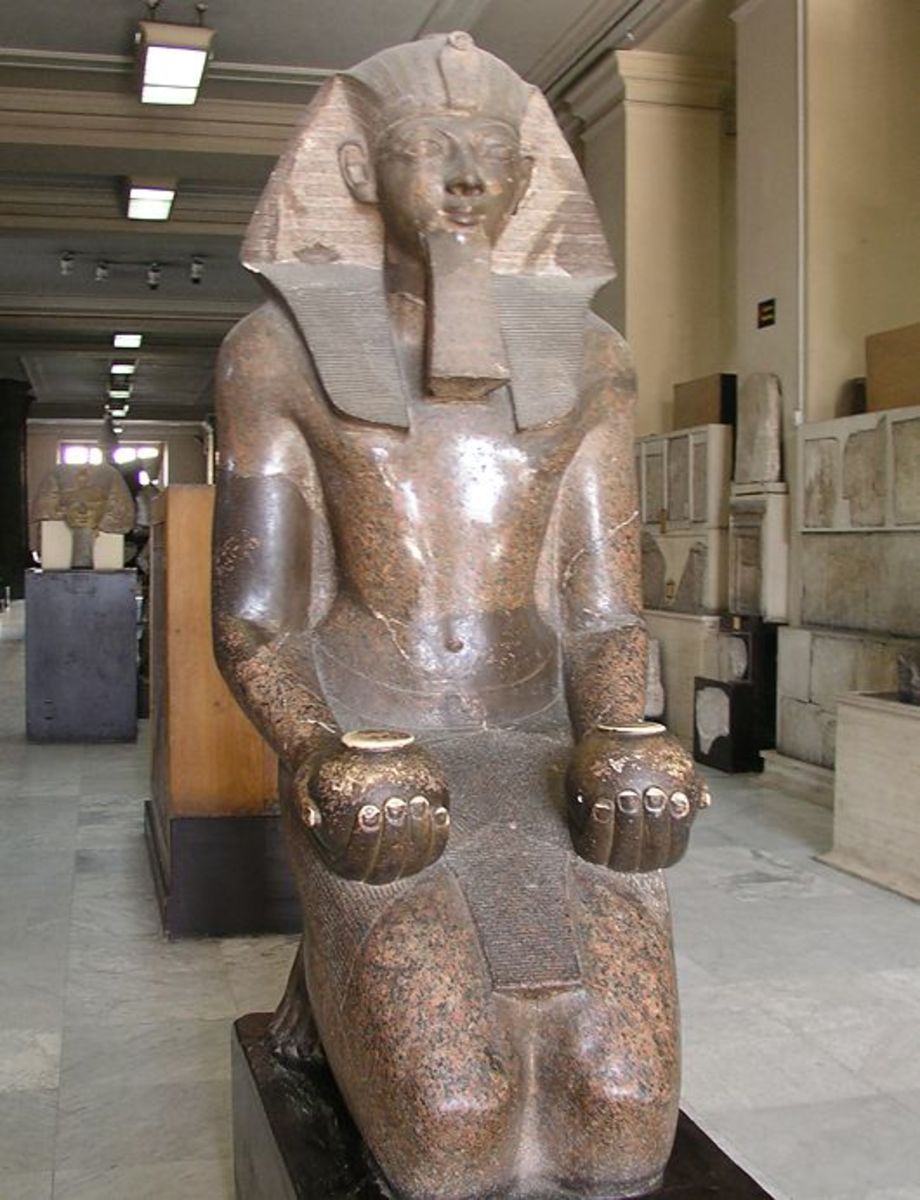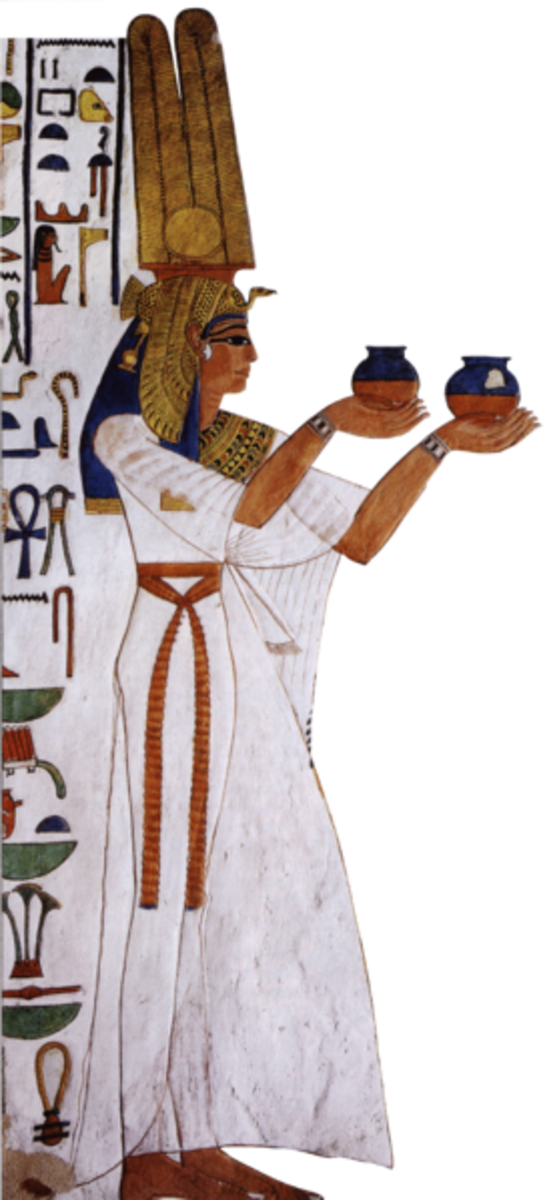- HubPages»
- Education and Science»
- History & Archaeology»
- History of the Middle East
The New Zodiac explained
The roots of our zodiac can be found in the temple of Dendara
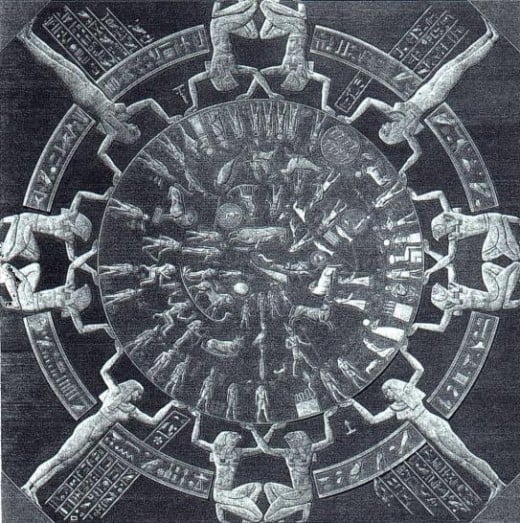
The zodiac we know today has a long history.
The zodiac (zoa and zoon in the Greek) is a band of constellations depicting imaginary animals, people and composite beings through which the sun, moon and planets move on an annual basis. The zodiac has it origins in ancient societies based on their observations of nature which was then superimposed upon star patterns in the sky. The western zodiac with which we are familiar has its origins in ancient Egypt and Babylon and finally through Greece. We can trace it back to the Fourth Dynasty of Egypt. The Greeks adopted their zodiac from the Egyptians and this is where we get most of our current zodiac symbolism from. Though there are some differences between the Egyptian and the modern zodiac that we use but most of it is the same. What we know of the Egyptian zodiac comes from the temple at Dendera. In that temple one will find a map of the zodiac on the ceiling that has three rings. The inner ring has the zodiac that has come down to us. The middle and outer rings depict important deities to the Egyptians that governed various times of the year. The zodiac we know is divided typically into 12, 27, 28 or 36 signs depending if one uses a month (moon period, sidereal) or the nightly transit of the moon in the Hindu or Chinese system or a ten day cycle. The divisions are equal among the signs, though the constellations themselves are not equal in their astronomical definitions. The months of the zodiac were first charted by observing the events of the year. These were superimposed upon a band of stars that the sun, moon and planets were seen to move through. Other constellations also held significance, particularly the North Star and the two Dippers. Some societies used all 48 main constellations in their system. Other societies, like the Aztecs, Inca and Maya also had zodiacs and these differed from what we are familiar with, owing to different seasonal cycles and reference animals.
As our familiar zodiac, comprising Aries, Taurus, Gemini, Cancer, Leo, Virgo, Libra, Scorpio, Sagittarius, Capricorn, Aquarius and Pisces has it roots in ancient Egypt, we can appreciate the meaning of each sign in that context. The Egyptians developed much of our current zodiac as they were obsessive sky watchers. The Egyptian zodiac differs from ours only in two sign regards and with the precessional difference in time. Instead of Cancer the crab, they used the sacred Scarab. Instead of the Capricorn sea-goat, they used the crocodile. They needed to know when the Nile would inundate the land and start the new annual cycle. They timed their year with the helical rising of Sirius, which can be sighted by lining it up with the three stars in Orion's (Osirus') belt. The rising of Sirius just before sunrise marked the beginning of their new cycle. Its rising signaled the oncoming flood. The flood was timed with the water-bearer; our Aquarius. Aquarius would allow the fish to swim over formerly dry land and provide a catch for the Egyptians. Pisces marked the time of fishing as a result and this was done before the waters had left the land. By the time Aries was inhabited by the sun, the first sowing was well under way.
In Egypt, Aries, the ram represented the time of the birth of new lambs. Taurus, the sacred Apis bull marked the month of the equinox for that eon. The bull was sacred and worshiped as a god. The sacred Apis bull was mummified and deified at death. The Apis bull of the heavens was the origin of our letter A. If you look in the skies toward Alderbaren (the Bull's eye) you can make out a large V formation lying on its side. The best times to observe Taurus these days is during the late fall and early winter months close to midnight. Taurus is situated between Orion and the Pleiades. The original A was written on its side emulating the sky born Apis bull's horns.
Following the Bull was the twins and the Scarab. The sacred Scarab beetle represented rebirth, born again concepts and reincarnation. The Scarab was seen collecting dung, out of which the new generation was born.
Following the Scarab was the Lion, which was both feared and hunted. The lion became the symbol of royalty and power. The constellation Leo held another important star; Regulus, one of the brightest stars in the heavens like Sirius and Alderbarren. Directly north of Leo is the Big Dipper and the marker stars pointing the way to the North Star, important in Egyptian cosmogony as the descending shaft of the Great pyramid lines up to the north star. In the last 4,150 years, this occurred twice; at 2141 BCE and 2004 AD when the pole star lined up directly. Due to the precession of the equinoxes, the North Star changes its location and different stars take that place over the zodiacal year, which is 25,827 years long according to the Egyptians. Once, long ago, the North Star was Alpha Draconis. In 2004, Polaris exactly lined up to the descending shaft and could be seen from the bottom.
Virgo represented the first harvest of Egypt and thus was represented by a Virgin, Isis and a sheaf of wheat. Following this was Libra, the scales for measuring out the wheat, the oil and the wine. The scorpion and/or serpent represented a threat that emerged as the year progressed. Both the Scorpion and Serpent were viewed as sacred. Scorpio was also seen as the Hawk and this is marked in the skies just south of Scorpio in the sign of Aquila; the Eagle. Scorpio hosts another important marker star, Antares, which is one of the brightest stars.
Sagittarius was the time of the hunt and took the form of a half man, half horse (Centaur from the Greek) as we see it today. The Nile was reaching its low point and hunting became easier. There were many reasons for the hunt and it was usually not for eating. Many animals, like falcons and ibises were destined to become mummified and buried with important individuals or by themselves. Thus for Egypt, the hunt was important. The falcon or hawk represented Horus, one of the most important gods of Egyptian belief. The ibis represented wisdom and higher learning and in its god form was depicted in hieroglyphics as a scribe. Thus it is interesting to note today that Sagittarius rules religion, beliefs, higher learning , wisdom and philosophy.
Capricorn the crocodile represented a serious threat just before the inundation. In the dry part of the year, as water born food was scarce, crocodiles invaded the land and went after people and livestock that tended to live near the banks of the Nile for reasons of agriculture, water and fishing.
Societies that base their astrology on the moon, divide the zodiac into 27 or 28 equal lunar mansions. Both the Hindus and Chinese have a 12 sign zodiac as well, but favor the lunar approach, structuring their calendars and years on the moon. Their astrological prognostications are also heavily weighted on the moon. The Muslims decided to use the lunar calendar as well.
Due to something called the precession of the equinoxes, the actual constellations and the zodiac periods given for astrology are different by some 24 to 25 degrees today (epoch 2010 AD). Thus, when we talk about the first day of Aries on March 21st, we are actually looking at the constellation of Pisces and at the spring equinox, it is about five to six degrees of Pisces. In a few hundred years, the spring equinox will be located at 30 degrees of Aquarius. Even astronomers, who refer to the heavens, mark Aries as the zero point of the zodiac, just as tropical astrologers do.
Astrology is a long standing and fascinating science


